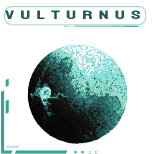Vulturnus (Tirun System)
Gravity: .92
Temperature: -232°C/-253°C
Size: 3,247 km diameter
Population: 10 million
Satellites: 4: Dongtian, Jingpo, Lassell, Selmis

First settled in the mid 5th century MG as an outpost to facilitate access to the Tirun Jump Gate. Two dome cities were established on opposite sides of planet. The capital and largest city called Vulturnus Municipality was positioned in the Great Ataraxia Crater. Lingxun was established shortly after. Lingxun is situated along the banks of a slow moving methane, ethane, and nitrogen ice river that flows from a cryofissure on the rocky world’s surface. This river provides a natural source of many materials that are useful in manufacturing.
Vulturnus Municipality, colloqually called VulMun, is a domed city erected in MG576. Positioned at the freezing edge of the Tirun System, the average transit time from Vulturnus to the Tirun Jump Gate is approximately 4 to 10 hours, craft dependent.
VulMun is the seat of power for the corporation Tartarus Unlimited. VulMun serves as a support hub for executives, their families, support staff, research and development departments, manufacturing, and attached security forces. Across the city’s 900 year span it has grown to accommodate a thriving population.
The city is divided into three small domes connected to the large central dome. A connecting network of tunnels feature foot paths and mag-trains to move workers from the outer domes to the central dome.
Municipal matters are handled by the governing body appointed by Tartarus Executives, controlled by the acting Chief Executive Officer, leader of Tartarus Unlimited.
Lingxun is an industrial hub built with five smaller connecting domes. It does not feature the synthetic daylight cycle found in VulMun.
Transit between VulMun and Lingxun is conducted via large personnel carriers, rovers, or low-orbit space craft.
Additionally a variety of smaller outposts are positioned across the planet as security checkpoints, supply depots, and geological research stations.